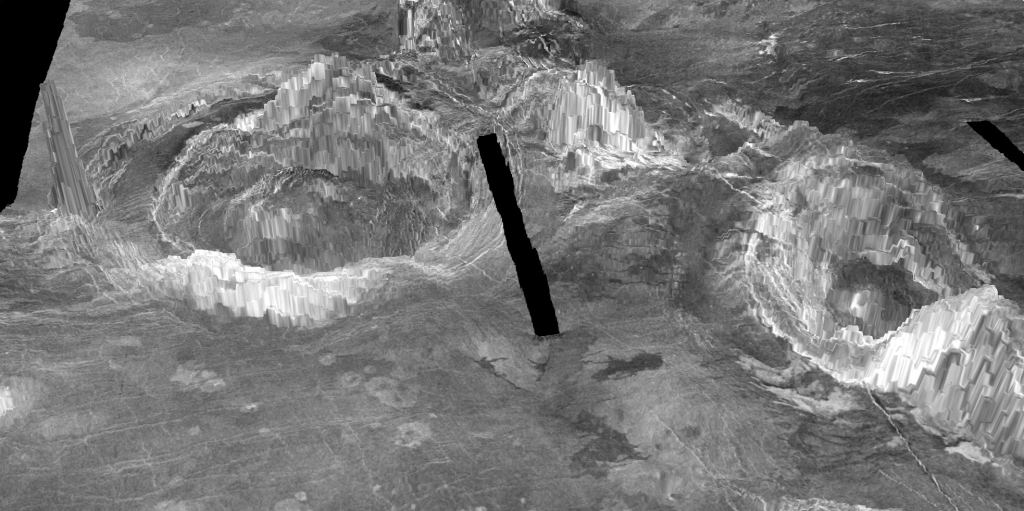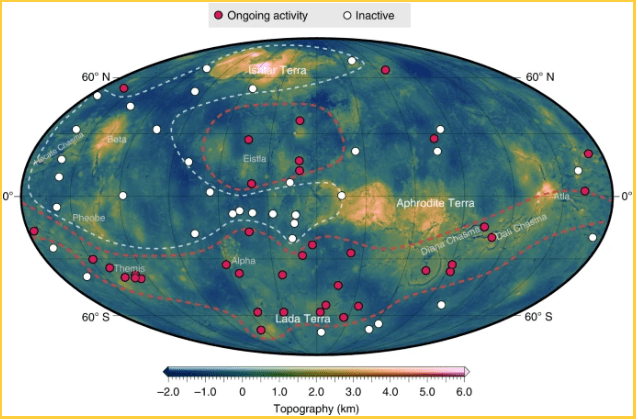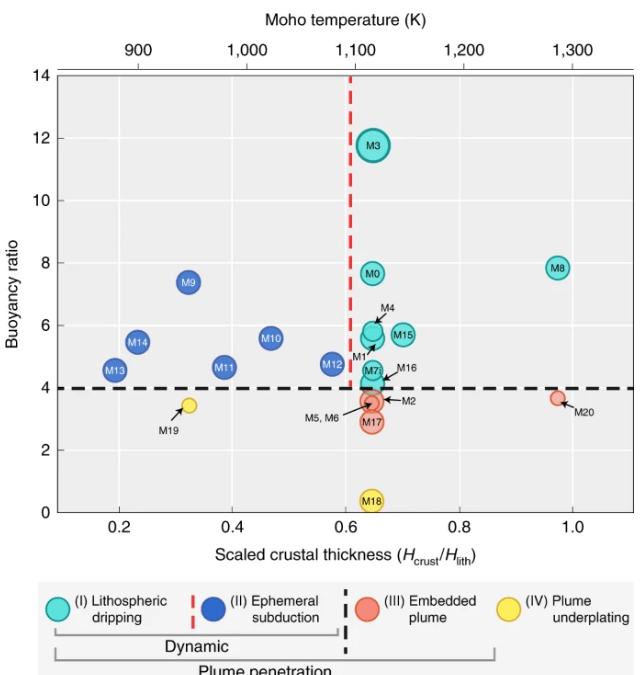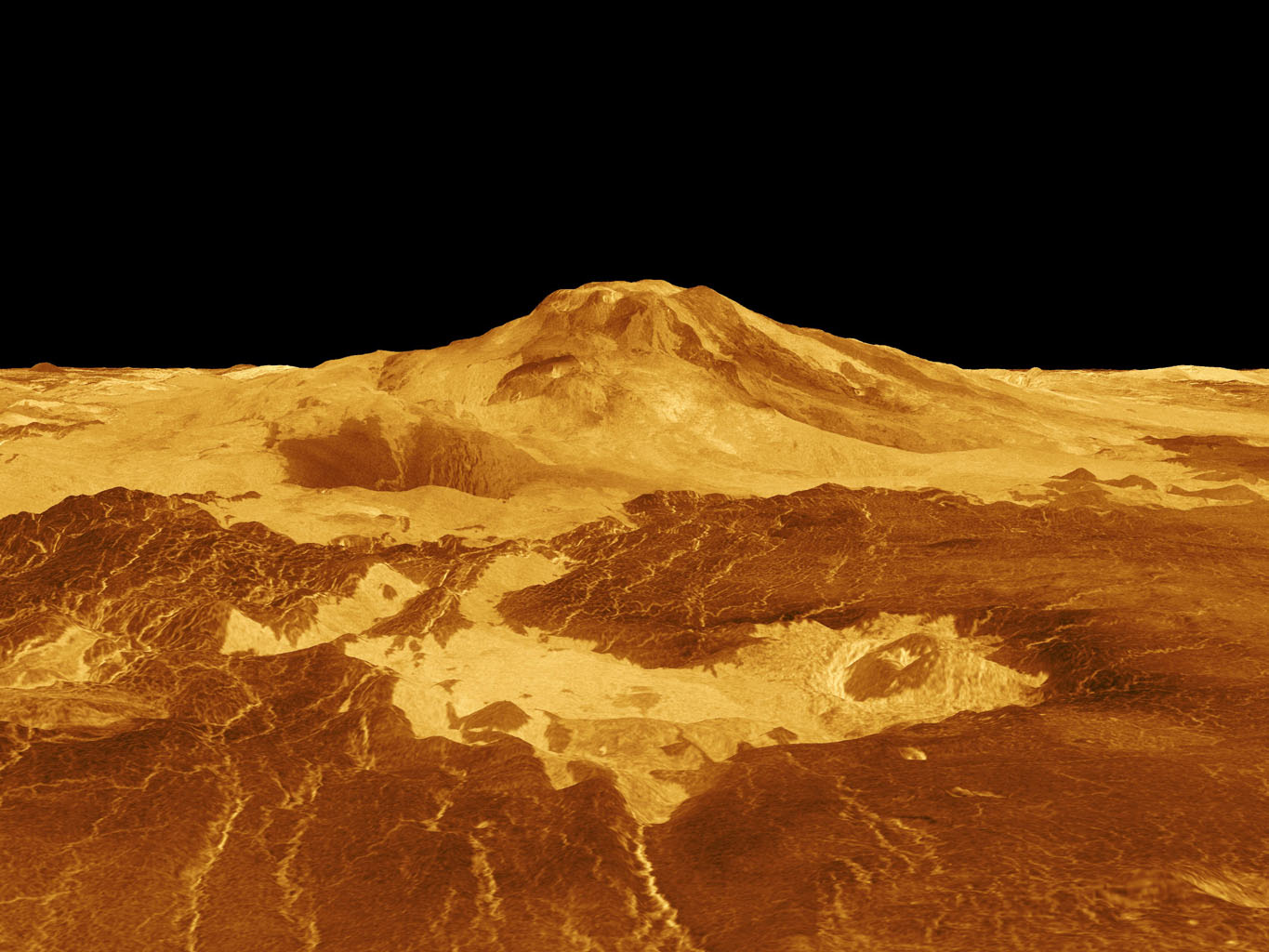Venus’ surface is no stranger to volcanoes. Radar images show more than 1,000 volcanic structures on the planet. But for the most part, they appear to be ancient and inactive.
Now a new study says that Venus is still volcanically active, and has identified 37 volcanic structures that were recently active. If true, there’s more going on inside Venus than thought.
The new paper is titled “Corona structures driven by plume–lithosphere interactions and evidence for ongoing plume activity on Venus.” Ann Gulcher, a PhD student from the Institute of Physics at ETH Zurich, is the lead author of the paper. Researchers from ETH and the University of Maryland contributed to the work. It’s published in the journal Nature Geoscience.
Venus’ surface is younger than other planets like Mercury and Mars. It’s clear that the planet stayed warmer longer than the other two, and was resurface with lava flows more recently than the other two. But for the most part, scientists think that Venus is volcanically inactive in our present day.
There’s some evidence of recent volcanic activity, mostly in the form of coronae. Coronae are ring-like structures on the surface, caused by plumes of hot material flowing from the depths of the planet through the mantle and the crust. For the most part, scientists think these coronae are signs of ancient activity. But in this new study, the team identified 37 coronae that they say are still active.
“This study significantly changes the view of Venus from a mostly inactive planet to one whose interior is still churning and can feed many active volcanoes.”
Laurent Montesi, Co-Author, University of Maryland
The surface of Venus is difficult to study, and examination by radar is one of our best tools to study it. The atmosphere is dense and opaque, and the whole planet is hostile to probes or robotic exploration. So just searching for signs of volcanic activity is difficult.
In their paper the authors write “We propose that the morphology of coronae can be used to reveal the location of recently active plumes.” To find these 37 active coronae, the team of researchers made use of simulations.

The simulations used numerical models of thermo-mechanic activity under the Venusian crust. With those, they constructed 3D simulations of active coronae formation. These simulations are highly detailed, moreso than any other simulations of Venus. They varied the size and the temperature of the plumes, and also the strength and thickness of the lithosphere. And since there is a variety in the scientific estimates of Venus’ crustal thickness, they varied that too.
Depending on the different values for those parameters, they identified four types of interactions between the plume and the lithosphere.
From those simulations, the team identified features present in active coronae, that are not present in inactive coronae. From there, they looked for the same features on coronae on real Venus. When they found them, they concluded that they’re active coronae on present day Venus. This study is some of the first evidence that coronae are still active on Venus, and that the planet’s interior is still churning with molten rock.
“This is the first time we are able to point to specific structures and say ‘Look, this is not an ancient volcano but one that is active today, dormant perhaps, but not dead,’” said Laurent Montési, a professor of geology at UMD and co-author of the research paper. “This study significantly changes the view of Venus from a mostly inactive planet to one whose interior is still churning and can feed many active volcanoes.”
“The improved degree of realism in these models over previous studies makes it possible to identify several stages in corona evolution and define diagnostic geological features present only at currently active coronae,” Montési said. “We are able to tell that at least 37 coronae have been very recently active.”
One of the keys to this result is the location of the active coronae. If they were spread evenly around the surface of Venus, one would rightly question the results. But they’re not; they’re clustered in a few locations.
This makes sense, and shows that the activity that spawned the coronae is prominent in a handful of locations. That in itself will provide some clues to what’s going on geologically under the surface. It’s also a guide to where to focus further research.

These results don’t suggest that Venus is tectonically active like Earth is. Rather, the results show that there’s still enough activity in the form of mantle convection and plume–lithosphere interaction to shape the surface. The coronae are evidence of this, but the coronae aren’t all the same, or the same age, so the processes may not all be the same. In their paper the authors write “Different corona structures may represent not only different styles of plume–lithosphere interactions but also different stages in evolution.”

The authors point out some of the shortcomings in their study, especially in the available observational data of Venus. Much of the data on Venus’ surface comes from NASA’s Magellan spacecraft, also known as the Venus Radar Mapper. It arrived at Venus on August 10th 1990, and ended its mission with a controlled entry into Venus on October 13th 1994. Other missions, like the ESA’s Venus Express, also mapped the surface, while other missions to Venus failed.
The authors write, “So far, we have been able to ascertain ongoing activity or inactivity for relatively few coronae on Venus. This is due not only to the dimensions and resolution of our numerical models, but also to the scarcity of high-resolution topography data.”
So, as is often the case, it’s up to future missions to help us make progress in understanding Venus. “Furthermore, any future mission that would collect more and higher-resolution topographic and geodynamic data of the planet would help further determine the activity of coronae and other geological/volcanic features…” the authors write.
So, what missions?
In the earlier days of space exploration, Russia/USSR was a powerhouse. Their series of Venera missions broke ground exploring Venus, and there’s talk of another Venera mission with much better technology. The proposed Venera D spacecraft would map the planet’s surface with radar.

The Indian Space Research Organization (ISRO) is also thinking about a mission to Venus. It’s called Shukrayaan-1, and it would study the surface and the atmosphere of Venus.
NASA is also thinking about returning to Venus. Their Venus Emissivity, Radio Science, InSAR, Topograph, and Spectroscopy (VERITAS) mission would map the surface of Venus in high-resolution. It’s specifically aimed at studying Venus’ geologic history, and would be a huge boost to our knowledge of Venus’ volcanic resurfacing and mantle processes.
But these are just proposed missions. For now, the data we have is the data we have. And as these researchers have shown, that data is still yielding results.

